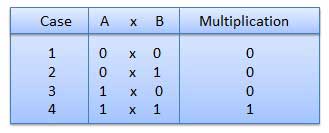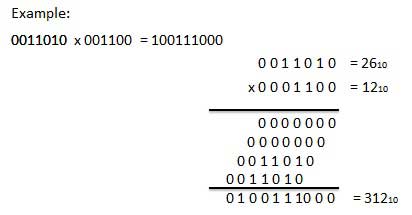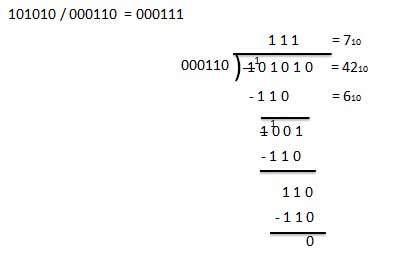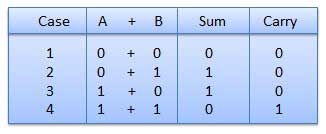
BINARY ARITHMETIC is used in digital systems mainly because the numbers (decimal and floating-point numbers) are stored in binary format in most computer systems. All arithmetic operations such as addition, subtraction, multiplication, and division are done in binary representation of numbers. It is necessary to understand the binary number representation to figure out binary arithmetic in digital computers.
In most ALU (arithmetic logic unit) hardware, the operated numbers are stored in a fixed number of bits, a typical value between 6 and 16 decimal digits. Therefore, there is a precision limit or precision error performing binary arithmetic on computers. This binary arithmetic is called fixed-precision arithmetic. This contrasts to arbitrary-precision arithmetic, such as Java BigInteger, a technique that calculations are performed on numbers whose precision is only dependent on the amount of memory available in the system. In other words, a number could occupy memory space as large as possible if there is a need for higher precision. We will focus on fixed-precision arithmetic from now on. We will discuss binary arithmetic from the logic design perspective in the following sections. Quite often that there are more than one logic design for a binary operation, a “better one” is always a best choice. The better one means the complexity is manageable and the logic circuit is simple. In hardware domain, simply is good and simply normally leads to better performance
Binary arithmetic is an essential part of various digital systems. You can add, subtract, multiply, and divide binary numbers using various methods. These operations are much easier than decimal number arithmetic operations because the binary system has only two digits: 0 and 1.
Binary arithmetic operation starts from the least significant bit i.e. from the rightmost side. We will discuss the different operations one by one in the following article
Table of Contents
Binary Multiplication
Binary multiplication is similar to decimal multiplication. It is simpler than decimal multiplication because only 0s and 1s are involved. There are four rules of binary multiplication.


Binary Division
Binary division is similar to decimal division. It is called as the long division procedure.
Example − Division

It is a key for binary subtraction, multiplication, division. There are four rules of binary addition.
 In fourth case, a binary addition is creating a sum of (1 + 1 = 10) i.e. 0 is written in the given column and a carry of 1 over to the next column.
In fourth case, a binary addition is creating a sum of (1 + 1 = 10) i.e. 0 is written in the given column and a carry of 1 over to the next column.Example − Addition

IMPORTANT MCQS FOR BINARY ARITHMETIC
1. What are the binary arithmetic operations?
A. Addition operation
B. Subtraction operation
C. Multiplication and Division operation
D. All of the above
Answer :- D
2. Calculate the following digits 101110 and 111101 by using binary addition operation and the answer will be
A. 1101010
B. 1101011
C. 1011011
D. None of the above
Answer :- B
3. What is the decimal equivalent of the binary number ?
A. 101
B. 102
C. 105
D. 107
Answer :- D
4. According to rule of binary subtractions the answer of 10-1 will be
A. 1
B. 0
C. either 1 or 0
D. None of the above
Answer :- A
5. The result of the binary subtraction of 1011 from 100000 is
A 101011
B. 010101
C. 101010
D. 111010
Answer :- B
